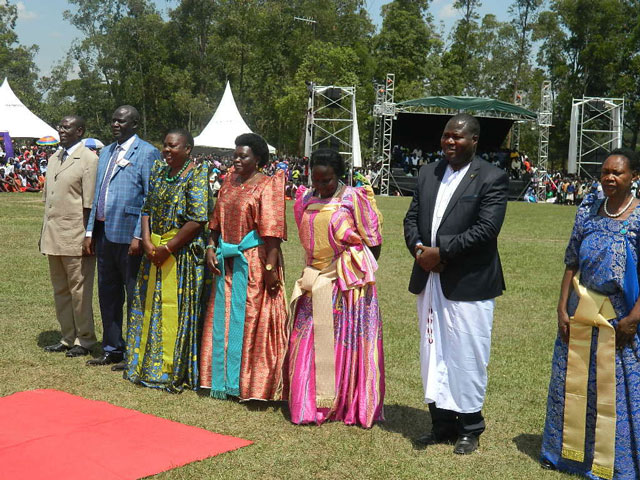
COMMENT | LOUIS JADWONG | Remarks by President Yoweri Museveni at an ordinary visit to Tororo last week could turn out to be decisive in the 2026 elections in the mineral-rich district.
President Yoweri Museveni, among other things, admonished ‘Badaama’ and Iteso, who he alleged do not each want the other to speak their language.
He had a point, but by dwelling on the least of the worries of the residents, he reignited long time fears that the President might not be sensitive enough to matters that have stagnated Tororo’s development politically and economically for two decades.
“The issue of friction between the Iteso and Badaama is puzzling. Why would a Mudaama have a problem with an Iteso speaking his own dialect and vice versa?” Museveni said as together with Maama Janet he joined Odrek and Patience Rwabwogo at the closure of the Light Up Eastern region convocation for Jesus, 2024 held Sept.13.
The quest for district and a city status has divided residents of Tororo, and manifested itself in many areas of the lives of the residents as the President pointed out.
Key to the conflict is demand by residents of Tororo county for a separate district, alleging marginalization by the Jopadhola ethnicity group.
However, a quick look at the district chairs over the past 30 years, shows the top position has previously been occupied by people from Busia, Bunyole, Bugwere, even an Atesot. This would contradict the allegation of Jopadhola marginalising others.
There is is also no empirical evidence that one group prevents the other from speaking their language. This, an expert on Tororo politics states, “is a figment of the creation of some self- seekers, mostly politicians who ride on ethnicity to seek votes”.
“What is the situation like in present day Tororo District ? Naturally the larger the number, the higher the amount of influence in matters, but this should not be to the prejudice of the peoples with lesser numbers!”
It is important to note that President Yoweri Museveni in 2006 actually granted the new district with the headquarters to be located in Mukuju. The Iteso rejected the headquarters in Mukuju claiming Tororo town was their land.
Okoth Nyalulu, a long-time former RDC and now on the Council of Elders of The Adhola Cultural Institution (TACI), said Tororo issues look simple but are complex. “Many people, and without fear of contradiction, even the President, have not understood what is contentious in the ‘Tororo question’. The question is not a mere location of the Municipality or Jopadhola against Iteso per se,” he said this week.
“It is a question of Rights. Through the history of migration, the Jopadhola have Heritage and Aboriginal Rights over the whole Tororo. Tororo was acquired and secured through pouring blood by our ancestors, and it became a Heritage for the Jopadhola,” he explained.
On the quest for a city, Nyalulu stated, “Is there a demand for a City in Tororo? The answer is Yes. Tororo Municipality, and even the Town before it was the third most industrialized in Uganda and it is a gateway to Uganda by road and potentially by air.”
He added a disturbing fact. “Tororo Municipality was one of the eleven Municipalities that implemented the program of Uganda Support for the Municipal Infrastructure Development, (USMID). All the other ten have been elevated to City status except Tororo,” he said.
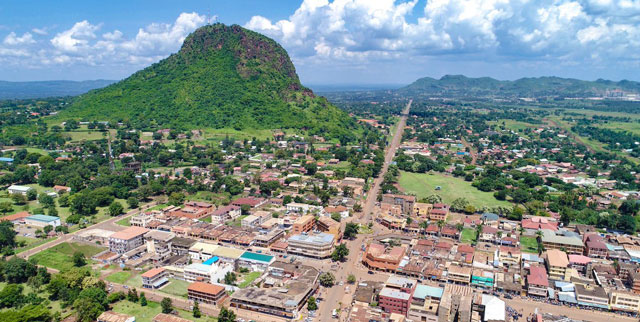
As the debate raged in the past week on social media, Kampala lawyer Charles Owor concluded that, “Badaama or Jopadhola, whatever you call us… Let us pursue how best to exploit the resources for everyone’s benefit, whether you arrived and settled in yesterday, or were there a long time ago! We share a common destiny and strive to pursue common goals!”
The Deputy Prime Minster (Deputy Jago) of TACI, Jag Adrian Owor joined the debate, worried that there is a misunderstanding about the issues in Tororo, and The President’s informers might have mixed up issues.
“I find the use of Teso in many comments about Tororo disturbing. Whereas there are Iteso living in Tororo district there is no Teso in Tororo. People should make a distinction between Iteso (the people) and Teso (a subregion which starts from Bukedea district to Katakwi),” he said.
The issue of Tororo county owning and adopting the historical headquarters of the Jopadhola (including the iconic Tororo Rock) has in the past been a topic of heated debate. In 2019, the current Uganda Defence Minister Oboth Oboth illustrated the importance of the town of Tororo to the Jopadhola, referring to it as ‘our Jerusalem’.
Parliament had around that time sent a team to London to try resolve the impasse, but it came to naught.
Oboth argued in parliament that, “What took us to London archives was not about boundaries but the historicity of ethnic settlements in Tororo. The boundary dispute is between who and who? East Budaama and West Budaama? Jopadhola and Iteso live together. Both sides are mixed through inter-marriages.”
Historian, Prof Pontian Okoth, is also baffled by the situation in Tororo.
“There is no fight between the Iteso and Japs, they have existed with each other for a long time and now genetically entangled, so the fighting was brought to divert the thinking. The Iteso in Tororo never came from Soroti but instead from Kenya as you can see in history maps, and have never had issues with the Japs,” he said this week.
|
Status of Tororo district Constituencies Ahead of 2026 decider! Tororo issues
Data compiled by Louis Jadwong Polls 2026 Ltd (
|
||
|
NAME |
INCUMBENT |
Others |
|
|
|
|
|
Tororo Municipality Constituency |
Apollo Yeri Ofwono National Resistance Movement
|
Okware Edward
Raganyi Ibrahim Yusuf
Olweny Charles
Emojong Deogratius
Ayeyo Silvanus
Othieno Romanus
Ochwo Godfrey
Kaikede Olowo John Stephen
|
|
West Budama Central Constituency |
Oboth Marksons Jacob National Resistance Movement Candidate (MP).
|
Okoth Geoffrey Oita
Oturo Jesse Eridad
Kirya Moses Isiko
Onno Zachariah
Oluka John Paul
Laaro Peter Ayeka
Oketch Ojiek Lazzarus
|
|
West Budama South Constituency |
Otiam Emmanuel Otaala National Resistance Movement
|
Owor Franklin
Akika Emmanuel Othieno
Katandi Joseph
Ongawi Kennedy
Oguti Albert Mathias
|
|
West Budama North Constituency |
Ochai Maximus National Resistance Movement
|
Othieno Okoth Richard
Owori John Paul
Okello Peter Jabweli
Alira David Pechokisika Opii
Akichere Gloria Oburu
Okongo Leo
Aluki George
|
|
West Budama North East Constituency
|
Odoi Oywelowo Fox National Resistance Movement
|
Ogandi Denis Peter
Nyero Vincent
Osinde Owor Okongo Jimmy
Kayala Micky
Osinde Benard
|
|
Tororo North Constituency |
Ekanya Geofrey Forum for Democratic Change
|
Nyakecho Annet
Othieno Godfrey
Ekileut James Peter
Obbo Johnson Independent
Otabong Charles Jonjo
Kalani Isaac
|
|
Tororo women MP position |
Achieng Sarah Opendi Candidate for Women Representative (MP) – Tororo National Resistance Movement candidate.
|
Ayo Jancita Independent
Abbo Rose Mary Owere
Ojaka Diana
Abwin Sarah Emojong
|
Clamor for district
The clamor for districts in Uganda started in the 80s, and saw one of the then biggest districts in the country Tororo (once also called Budama and was part of Bukedi) reduced to a shell.
Residents of of Tororo county demanded a district that included Tororo town, and a man in Molo subcounty ate a living rat in front of President Museveni in 2005 to demonstrate their desire.
Elders of Padhola had no issue with a district being offered to those of Tororo country, but said it should not be linked to having Tororo town, now municipality, as their capital. They advised a new capital be named from their area.
It is important to note that President Yoweri Museveni thereafter in 2006 granted the new district with the headquarters to be located in Mukuju. The Iteso rejected the headquarters in Mukuju claiming Tororo town was their land. The Jopadhola insisted the whole Tororo district is historically their land (including Tororo Rock) and headquarters, and cannot just be given out like that.
President Yoweri Museveni then directed that the matter be resolved using the “colonial boundaries” in order to determine where the municipality should be located in the event of a split of the district.
In stepped Professor Oloka Onyango of Makerere University. He argued in a 2017 paper that, “ Where a new district has been created, the towns/municipalities have remained the headquarters of the old “mother” district. All the new districts have established new headquarters. This has created a precedent followed without exception.”
Oloka Onyango in his presentation then made a passionate appeal.” I appeal to the good sense of every citizen of Tororo specifically and Uganda in general to emerge from this narrow, sectarian and selfishly-motivated politicking. Has the creation of 78 new districts since 1995 really improved service-delivery at the local government level?”
Another expert supported Oloka Onyango. “If the main contention is not so much the creation of a would be ethnic based district, but the location of Tororo Municipality; then against the precedent mentioned by Prof. Oloka Onyango, elevate it to city status and then no one has ethnically based claim to it and it becomes another district with no ethnic connotation. Indeed even smaller towns have become cities,” said the lawyer.
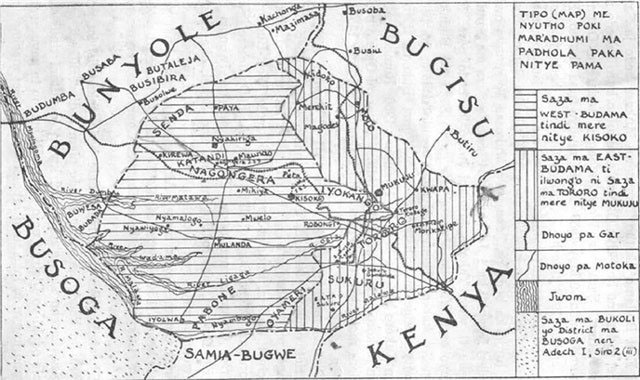
Origins of Tororo district
Bukedi District was a subdivision of the Eastern Province of the Uganda Protectorate, with headquarters in Mbale. In the early 1920s Bukedi was divided into the Budama, Bugisu and Bugwere districts.
These were recombined into Mbale District during World War II (1939–1945), then split in 1954 into a new, smaller Bukedi District to the west and Bugisu District to the east, sharing Mbale Township as their administrative headquarters. Bugwere and Bugisu were separated , and Bugwere was again combined with Budama to create Bukedi District. The district contained the counties of Pallisa, Budaka-Bugwere, Bunyole, West Budama, Tororo, and Samia-Bugwe
In 1968 the administrative headquarters of Bukedi District were moved to Tororo. Later Bukedi District was split up into a number of smaller districts.
All these broke of as recently as the 80s and 90s, leaving Tororo as a shell of its former self. Tororo originally comprised of West and Eastern Budama, according the historian Prof Pontian Okoth.
According to Prof Okoth, at some point, the colonial state was thrown into confusion by the state of disunity among Jopadhola clans and between the Jopadhola and the Iteso community based in Tororo.
The Nyapolo Ogule clan which was the dominant clan and predominantly catholic wanted to rule Padhola. This could not be allowed by the other clans, most of which were Protestants. They had many of their children who had obtained formal education, they also had the support of the colonial state.
The Iteso then wanted special recognition in the district, including on language being spoken at official functions and in church. The Jopadhola did not allow this development, noting that Budama was their land.
They felt this demands would result in ethnically based administrative units which fail to take cognizance of the history and aboriginal claims of the Japs. The said it remained a fact that the area now predominantly occupied by the visiting ethnic group was originally part of Padhola or Budama. Even today, there is a sizeable number of Japs in those areas.
The colonial state had actually decided way back in 1938, to divide Budama County into East and West making two County headquarter for easy administration. West Budama remained with the original headquarter at Kisoko while East Budama had its headquarter at Mukuju. Both headquarters were equidistant (6 miles) from the Main Post office at Tororo. Both religions and inter-clan conflicts were serious problems in Padhola, writes Prof Okoth in his book on the history of Padhola from 1500 to today.
Tororo, being a key railway and road link to Kenya and the rest of the country, was still the third most powerful industrial town in Uganda by the time NRM came to power in 1986.
The rest of the people in Tororo preferred that instead of Tororo being part of the new district being demanded for, common ground be reached and it instead becomes a city to serve all.
Kwar Adhola’s stand
Kwar Adhola Moses Stephen Owor,98 is the King and cultural head of the Jopadhola. He has been consistent on stating that Tororo is willing to accommodate visitors for the sake of harmony. Indeed Tororo was at one time referred to as the “United Nations of Uganda.”
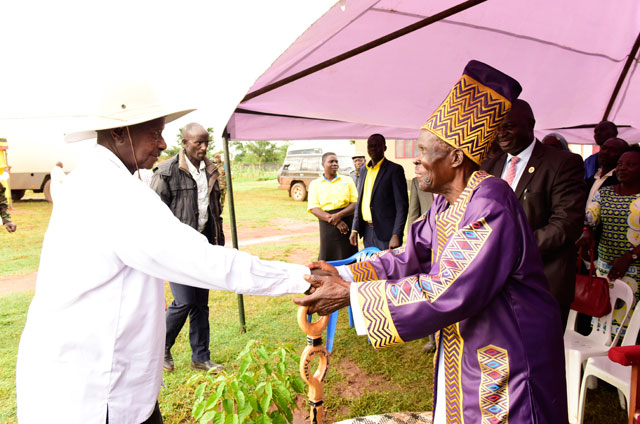
The Kwar Adhola Moses Owor’s palace, built in the 60s, is actually in Tororo Municipality, and he has previously had face to face discussions with both the late Emorimor Papa Osubani and the current one Emoloit. He gave each of them a message unity of purpose, even with diversity in cultures.
That has been his stand even in meetings with President Yoweri Museveni, where he has actually stated that the Jopadhola have no problem being to referred to, as they rightly should, as Badaama.
He explained that the name Wadama originated from a mis presentation of the word “widoma” in Dhopadhola ‘meaning you will see or you have seen my strength or might’. When enemies heard the Jopadhola warriors chanting this, they thought that was the name of the people fighting them. Hence Wadama instead of widoma.
******
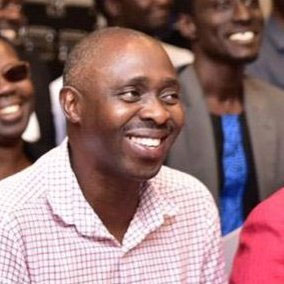 Louis Jadwong is a veteran journalist, now online content editor. He worked at the New Vision for over 20 years, and retired in December 2015. Currently executive member of St Mugagga Kabondo (Basic Christian Community BCC) and also Head of Information at St Angela Bugema Sub-parish that is part of Lweza Parish, Kampala Archdiocese.
Louis Jadwong is a veteran journalist, now online content editor. He worked at the New Vision for over 20 years, and retired in December 2015. Currently executive member of St Mugagga Kabondo (Basic Christian Community BCC) and also Head of Information at St Angela Bugema Sub-parish that is part of Lweza Parish, Kampala Archdiocese.
Twitter (X) @jadwong | Blog: https://ljfiles.blogspot.com/ | https://saintangellabugema.wordpress.com/ | St Mugagga (click to read)
 The Independent Uganda: You get the Truth we Pay the Price
The Independent Uganda: You get the Truth we Pay the Price

 source VISIBLE POLLS.org)
source VISIBLE POLLS.org)

